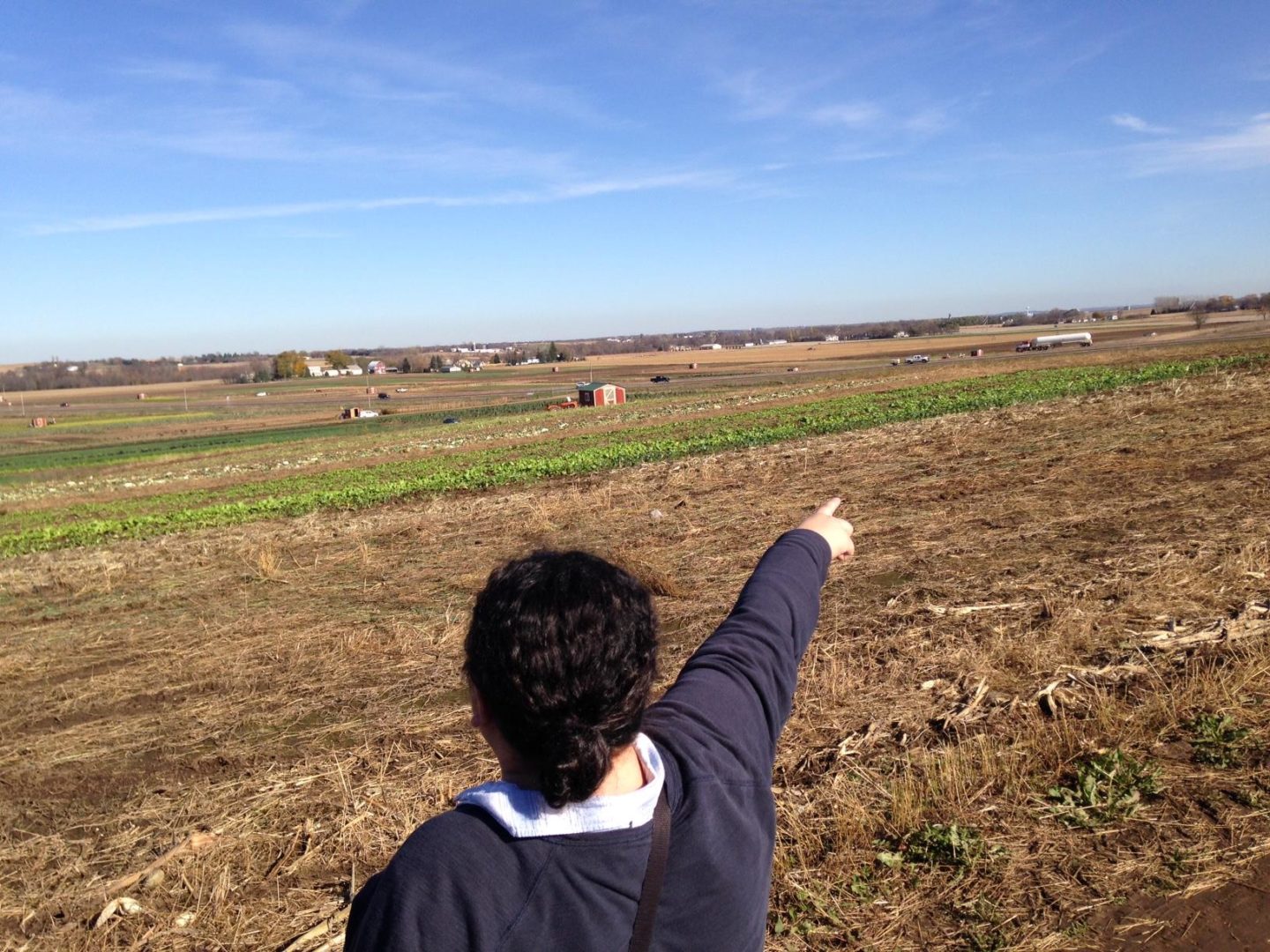Lease-to-Own
 Using Lease-To-Own to Transfer Farmland & Farm Businesses
Using Lease-To-Own to Transfer Farmland & Farm Businesses
Lease-to-own allows farmers to transfer land with flexible options, a test period, and less debt for the incoming (tenant) farmer. Leasing for the purpose of permanently transferring ownership over the long term requires strong communication and a good working relationship between the parties bound by the lease.
In a typical lease-to-own setup, the incoming (tenant) farmer makes rental payments to the landowner to allow the tenant farmer to start working on the land and to start investing in eventual ownership of the property. The landowner continues to own the land until certain payments have been made and/or certain other prerequisites are met, and then the tenant becomes the landowner.
A lease-to-own essentially sets up an extended purchase and sale agreement. This means that the landowner agrees to sell the farm and the tenant agrees to purchase the farm at a date specified in the lease. A farm lease can be crafted with different provisions that may include an option to purchase or a right of first refusal (the ability to be first in line to purchase when the property comes up for sale). The heart of a typical lease-to-own agreement, however, is that it incorporates the sale into the lease rather than presenting an option that may or not be exercised.
Farmer Spotlight:
HAFA

A group of Hmong farming families in Minnesota formed the Hmong American Farmers Association (HAFA) in 2011 with a mission “to advance the prosperity of Hmong American farmers through cooperative endeavors, capacity building and advocacy." As part of its approach to community wealth creation, HAFA now manages an incubator farm from which member families sublease land.
The incubator farmland itself was purchased by a social investor with the intention of leasing the land back to HAFA. Because the purpose of the social investor buying the land was always to transfer it to HAFA at some point, the parties drafted the lease with a future transfer of ownership firmly in mind. Click here to read more about how a lease-to-own arrangement has facilitated this cooperative farming arrangement.
The Lease-to-Own Written Agreement
See the leasing section to learn more about the basics of lease agreements and why it is important that leases be written contracts, rather than handshake deals.
Beyond the basic lease terms that should be contained in every lease, the lease in a typical lease-to-own arrangement should call for the eventual sale of the property from the landowner to the tenant farmer. This should include the following components:
Purchase Price
- What is the total purchase price for the farmland, and what counts toward it? For example, if the lease sets a purchase price of $500,000, and a monthly rent of $1,000, the lease should also say how much of each monthly rental payment counts towards the purchase price. There is no single correct answer. It will depend on the circumstances of the landowner and the tenant farmer and the agreement they reach together. It’s possible that 100 percent of each rental payment could be counted toward the $500,000 purchase price, and it’s also possible that something less than 100 percent could be counted.
Accounting
- Who is going to track what counts towards the purchase price and how are the landowner and tenant farmer going to make sure this tracking is accurate and agreed upon? Often, the landowner will provide an annual report to the tenant farmer to keep things on track. However, if the tenant farmer disagrees with the report details, the lease should spell out a process for resolving the disagreement. Another way to help ensure agreement between the landlord and tenant could be to use a shared spreadsheet that both parties can access at any time (such as in Google Docs online, or an Excel spreadsheet in a shared Dropbox folder) to track each payment and the percentage that goes toward the purchase price.
Deadline for Sale
- Is there a deadline by which the sale must occur, and if so, what is it? The lease should set a deadline. It could be a certain date, such as within 15 years of the date of the lease. Or it could be based on certain benchmarks. For example, the sale benchmark could be within three years of the tenant farmer’s annual farming income exceeding $100,000, or within five years of the tenant farmer opening and operating a farm store.
Long-Term Versus Short-Term
Lease-to-own agreements can be long term (roughly 10 to 99 years) or short term (roughly 1 to 10 years), depending on what the landowner and tenant farmer determine will best facilitate the transfer. A long-term lease may be the best option when a transition in ownership is the ultimate goal. Commercial lenders may be willing to make a loan to tenant farmers with a long-term lease in certain circumstances. Qualifying for a loan is even more likely when the long-term lease allows the tenant farmer to build and own improvements, such as barns, parlors, processing areas, and more. Additionally, a long-term lease can provide the landowner with a measure of security because the tenant has agreed to make rental payments for a number of years and will not need to renegotiate the lease every year. This means fewer costs and time requirements (unless the lease is terminated early for some reason).
On the other hand, a short-term lease can help facilitate a transfer more quickly if a tenant farmer has sufficient financial assets and the landowner does not need or want to retain control of the property for a long period of time.
The length of the lease is entirely up to the landowner and tenant and it will vary based on the unique financial, familial, and other considerations involved in each transfer.
 Pros and Cons
Pros and Cons
 Advantages to Using A Lease-To-Own
Advantages to Using A Lease-To-Own
- It may be easier to find better, more suitable property to lease than to purchase.
- Leasing is a good way to start farming with less risk, while still building sweat equity.
- Leases can provide long-term security to both parties so long as the relationship is strong and both parties follow the provisions of the lease.
- Leases can enable legal and economic feasibility of constructing permanent structures.
 Disadvantages to Using A Lease-To-Own
Disadvantages to Using A Lease-To-Own
- If the landlord-tenant relationship is strained or simply is not a good match, the transition could be rough for both parties, or in the worst case scenario, the deal may have to be cancelled.
Special Considerations
A lease-to-own arrangement requires that the landowner and tenant farmer understand and agree upon several key issues, all of which should be written into the lease:
- Will the landowner simply collect rent and move off the farm during the lease, or will the landowner mentor the tenant farmer and/or have an active role in the management and operation of the farm? (Note that there may be tax implications of landowner involvement.)
- How long should the lease be to allow both parties to generate enough income before the transition is complete?
- Will the landowner allow the tenant farmer to continue to use any business name or label attached to the land or farm?
- Will the landowner’s agricultural equipment and/or livestock be included in the lease-to-own arrangement, and if so, how?
- Where will the landowner and tenant farmer live? Is there room for both on the farm?
- What will the landlord-tenant relationship look like?
 How An Attorney Can Help
How An Attorney Can Help
The Attorney’s Role
It’s not an attorney’s job to make decisions for farmers or to set farm transfer goals. Instead, attorneys can provide information about pros and cons of different options, advice about what is common versus unusual, fair versus unfair, etc. Attorneys can help farmers understand the universe of possible farm transfer goals and help narrow down individual options so that farmers can make final decisions.
How An Attorney Can Help With Lease-to-Own
- Write lease terms and provide advice about how the lease can address personal and professional values, finances, and other concerns.
- Advise about lease termination provisions and arrange a trial period for the lease, if desired.
- Explain legal rights and responsibilities in the event of a default.
- Help initiate an alternative dispute resolution process in case of a dispute.
- Advise about liability and other insurance needs.
- Explain how a lease-to-own arrangement may affect taxes, social security, and other governmental program eligibility or payments.
 Additional Resources
Additional Resources
- Land for Good, A Landowner’s Guide to Leasing Land for Farming (2012)
- Kathy Ruhf & Ben Waterman, Land Access for Beginning Farmers: Part I, Land for Good & the University of Vermont Extension
- Drake University Agricultural Law Center
- Land Stewardship Project, Farm Transitions: Sustainable Long-Term Leases FAQs
- Jesse Richardson, Transferring the Farm: Leases Video
Related Legal Tools



The Center for Agriculture and Food Systems is an initiative of Vermont Law School, and this toolkit provides general legal information for educational purposes only. It is not meant to substitute, and should not be relied upon, for legal advice. Each farmer’s circumstances are unique, state laws vary, and the information contained herein is specific to the time of publication. Accordingly, for legal advice, please consult an attorney licensed in your state.
